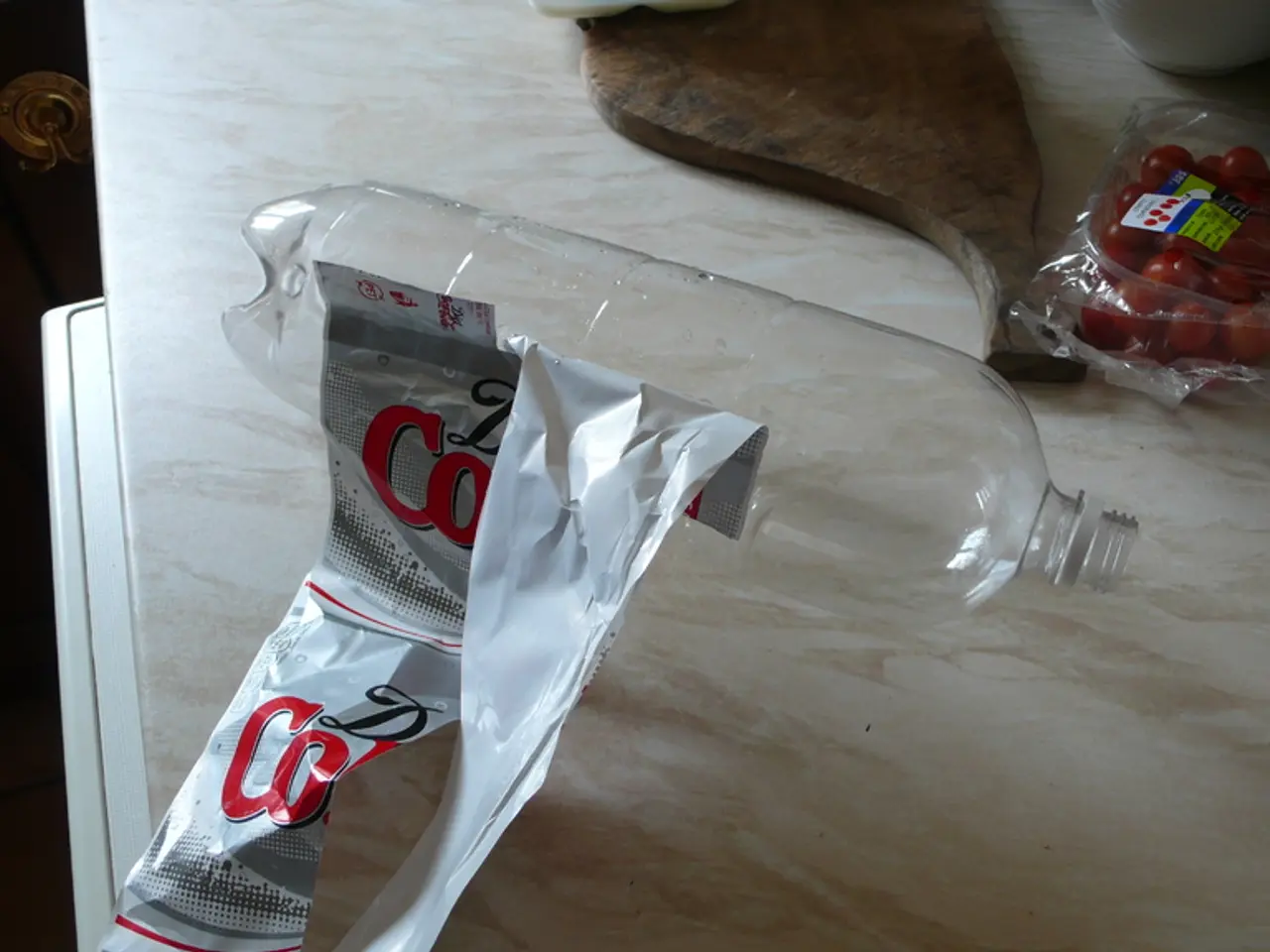"Testing Innovative Plastic Material from Milk and Vinegar"
In a fun and engaging science project suitable for children, you can create your very own bioplastic using milk and vinegar. Here's a step-by-step guide to this fascinating experiment.
Firstly, heat about one cup of milk until it is hot and starting to bubble, but not boiling. This warm milk preparation helps the reaction proceed faster. You can use a microwave or stovetop for this step.
Next, stir in about one tablespoon of white vinegar (or lemon juice as an alternative) into the hot milk. Continue stirring gently as the milk curdles. This reaction occurs because the acid in the vinegar changes the milk's pH, causing casein proteins to denature and coagulate, separating into solid curds and liquid whey.
Once curds form, pour the mixture through a sieve or cheesecloth to strain out the liquid whey, leaving behind the solid casein curds. Press and mold these curds into desired shapes. Let them dry for 24–48 hours. As the curds dry, they harden into a bioplastic made from casein proteins.
This process demonstrates protein denaturation and coagulation, as vinegar's acid causes the milk proteins to clump, and drying the curds creates a natural plastic. The experiment is both educational and hands-on, illustrating how natural materials can form bioplastics. It is safe and uses common kitchen items.
When the milk is heated, the casein molecules unfold, move around, join forces, and create a long chain of polymers, forming the casein plastic. Mixing warm milk and vinegar causes a chemical reaction that separates milk protein (casein) into curds. If desired, the plastic-like dough can be colored with Sharpie markers.
This experiment is suitable for children in the 1st to 6th grade and can be conducted using the scientific method. By formulating a hypothesis, choosing variables, and observing the results, children can learn about chemical reactions, polymers, acids and bases, and casein protein.
Additional science resources are available, including a free chemistry guide, science books for kids, science supplies lists, and printable science projects. By changing one variable at a time, such as using low-fat or non-fat milk, or using lemon juice instead of vinegar, this activity can be turned into an actual experiment.
The "Milk and Vinegar Experiment" is a science project in the field of chemistry, demonstrating the formation of casein plastic, a type of plastic that can be molded into different shapes. The substance formed from the milk and vinegar mixture is not real plastic, but a substance called casein plastic. After 24–48 hours, the plastic-like dough is hard and can be removed from the mold.
In conclusion, this simple and safe chemistry experiment is an exciting way to introduce children to the world of science and chemistry, while also creating a fun and educational activity. So why not give it a try and unleash your inner scientist?
- This milk and vinegar experiment allows kids to create their very own bioplastic, making science education and self-development fun and engaging.
- The experiment demonstrates casein protein denaturation and coagulation, using common kitchen items like milk and vinegar.
- To proceed, heat a cup of milk, then stir in a tablespoon of vinegar or lemon juice, watching as the milk curdles and forms curds.
- You can mold and color these curds into desired shapes, waiting 24–48 hours for them to dry and harden into a bioplastic.
- This project showcases the formation of casein plastic, a type of plastic derived from milk, and offers an opportunity for kids to learn about acids and bases, polymers, and chemical reactions.
- With the scientific method, children can formulate a hypothesis, choose variables, and observe results, making this experiment suitable for 1st to 6th graders.
- For additional resources, consider printable science projects, chemistry guides, science books for kids, and science supplies lists, found online.
- To take it a step further, alter one variable at a time, such as using low-fat or non-fat milk or using lemon juice instead of vinegar, to turn this project into a systematic experiment.
- By unleashing their inner scientists and conducting experiments like the milk and vinegar project, kids can foster a lifelong love for STEM (science, technology, engineering, and math) and broaden their knowledge in the field of chemistry.




